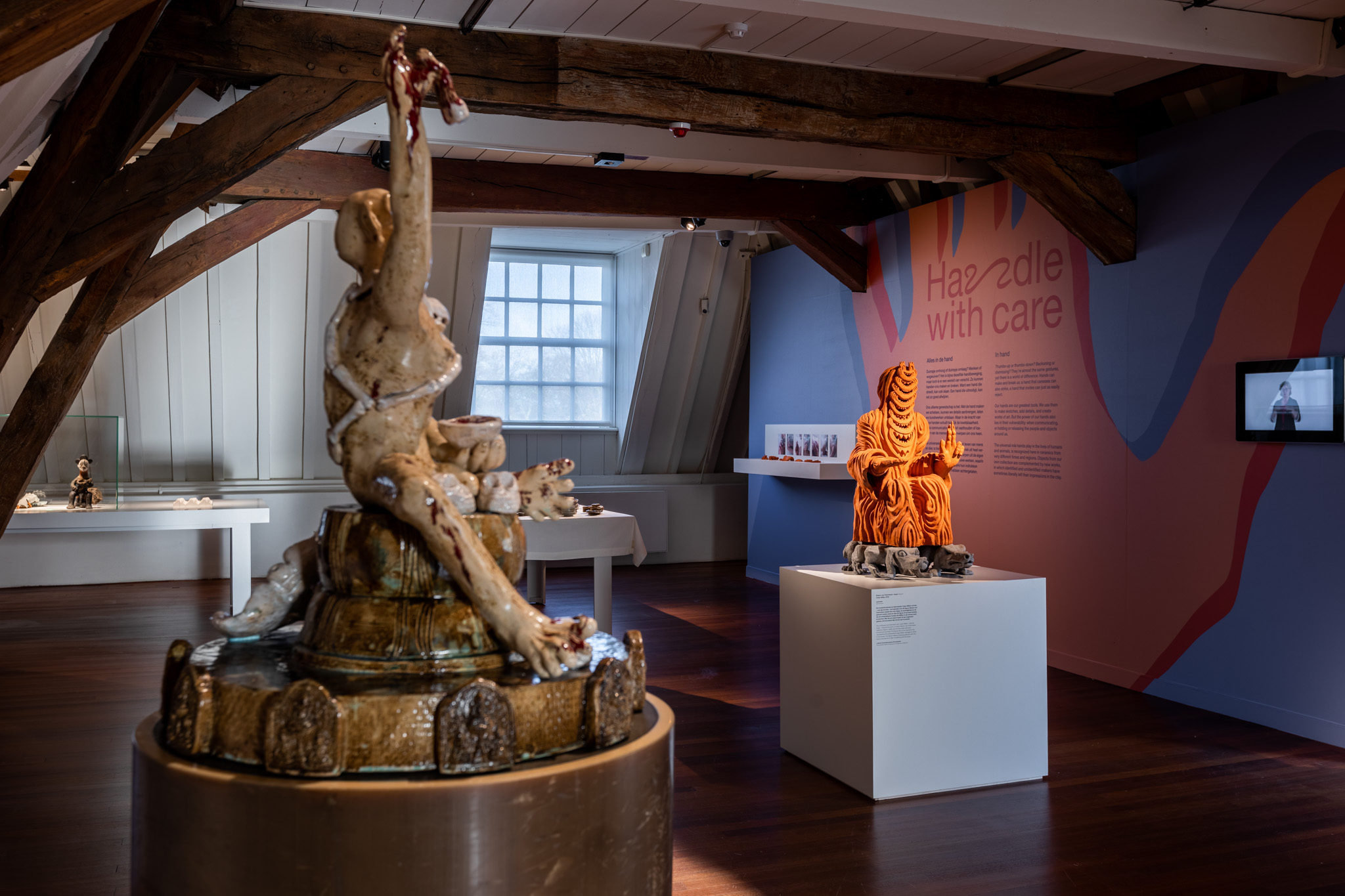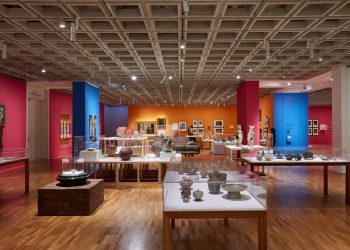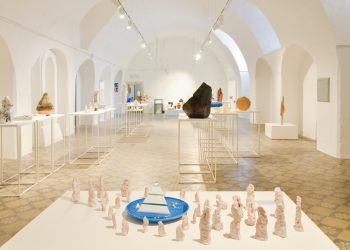Last month, the Princessehof National Museum of Ceramics in Leeuwarden, the Netherlands, opened Handle with Care, a fantastic exhibition that revolves around the hand and gestures – expressions of intimacy, compassion, serenity, authority, labor and celebration. We talked to curator Dr. Wendy Gers to learn more about the complexities of organizing such an awe-inspiring show.
First, I want to congratulate you for curating such a beautiful show. What sparked the idea for Handle with Care?
As a curator, one always has a bucket list of subjects on which one would like to develop an exhibition. I have always wanted to do a show on either the hand or the foot. I chose the hand after a scan of our permanent collection of over 45000 works. Hands are the key tool for making ceramics, and they are capable of communicating on so many levels, both intimate and public – through caresses, gestures, and signs. Hands also serve in many metaphors – for ‘handling’ things that come our way!
The exhibition includes a variety of works, from archaeological finds to recent acquisitions of contemporary artworks. Can you explain the show’s theme?
Princessehof has an incredible collection of ceramics from Asia (primarily Chinese), Europe, the Middle and Near East and South America. Our sister museums, the Fries Museum and Resistance Museum, also have collections of ceramics. As my first major exhibition for the Princessehof, it was an opportunity to become (superficially) acquainted with these collections. Historical and contemporary works and installations from all three collections were placed in dialogue with new acquisitions and loans from contemporary artists.
Are all the works in Handle with Care made by hand? Does the exhibition’s theme allude to the ever-expanding use of technology to create art?
Yes, in your question, I sense the commonly held perception that works produced by new technologies exclude the hand. In fact, nothing could be further from the truth!
Many traditionalists love the manual aspect of creating ceramics and are resistant to tools that involve more screen time and less hand time! However, the use of new tools, such as 3-D printers, does not exclude or reduce the importance of the hand. Anyone who has used these tools knows they are very laborious and require permanent observation and lots of manual input!
In recognition of this space of contention within the ceramics world, I included an installation of a manual 3D printer by Dutch designer Daniel de Bruyn. The work is powered by manually winding up a rotary mechanism and requires lots of handling with care!
Do you think contemporary ceramics is handled and cared for differently than other media?
Within a museum context, contemporary ceramic requires a moderate amount of care! Obviously, ceramics are relatively fragile when compared to, say, a bronze sculpture, but they have many other wonderful qualities! They will endure for at least 30 000 years and not degrade like many modern materials, including plastics. They don’t require special maintenance like many metals that oxidize, tarnish and corrode. And, in a period where everyone is watching energy bills in museums, ceramics do not require climate control for storage or display, unlike works on paper, items made of organic materials or fiber, etc.
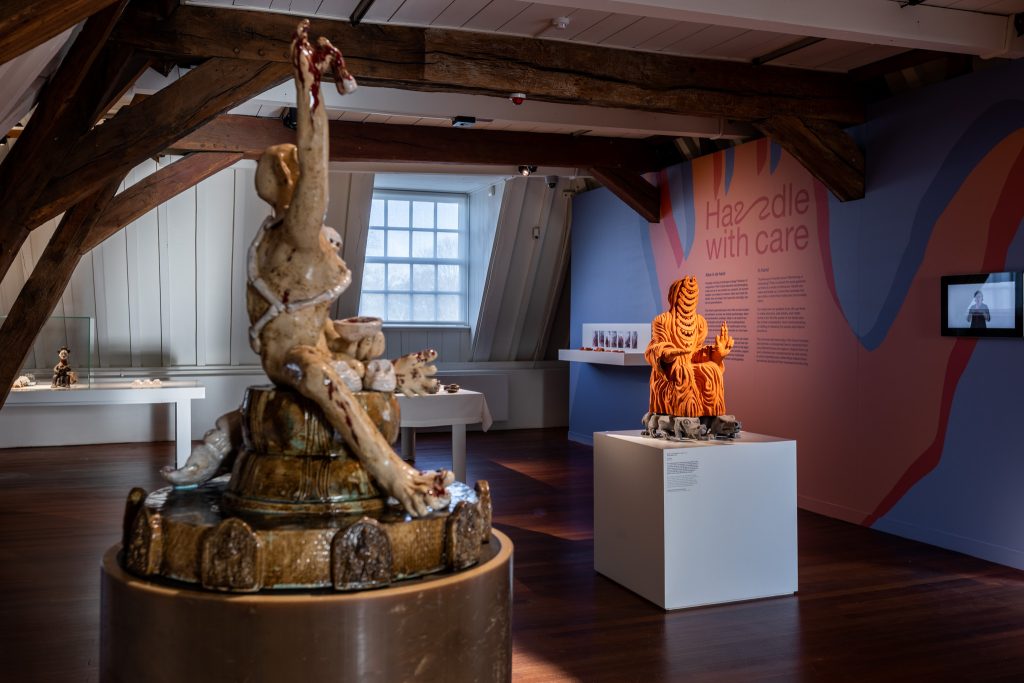
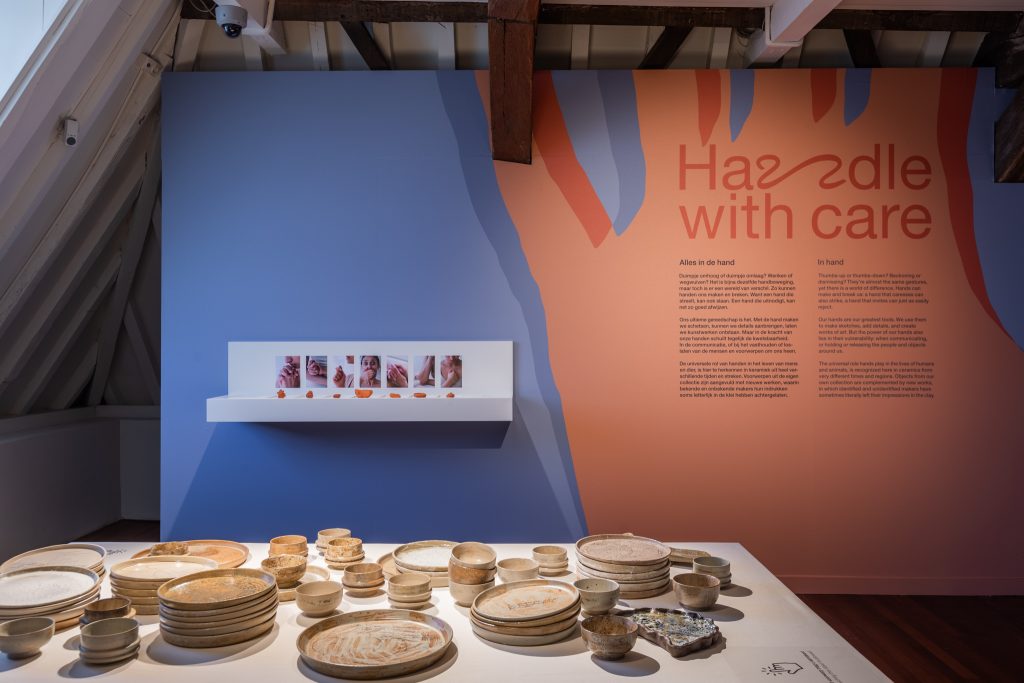
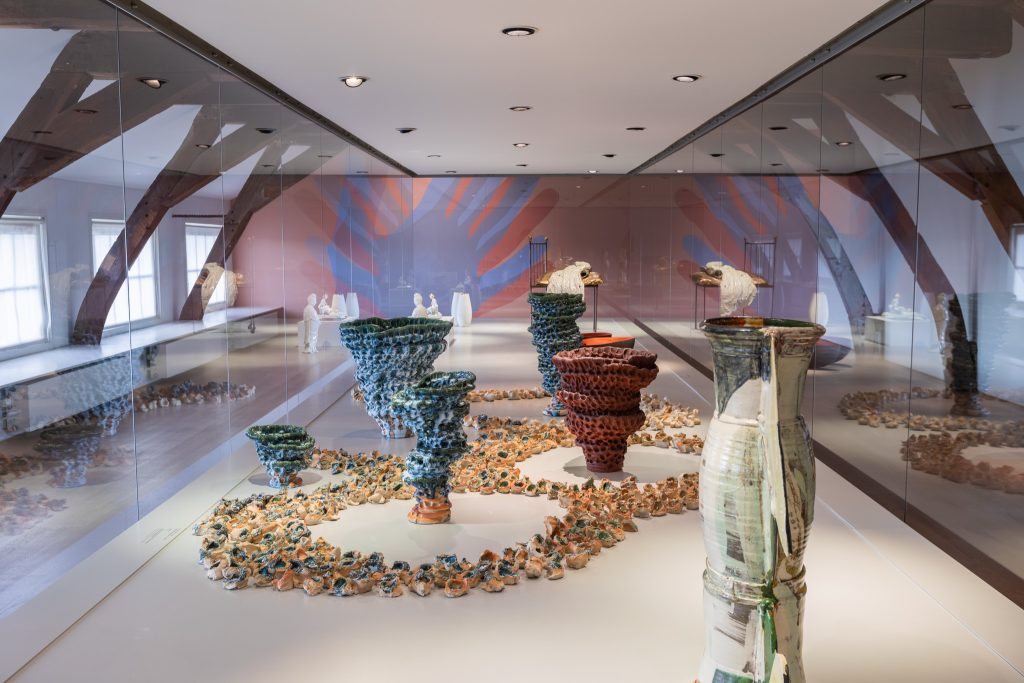
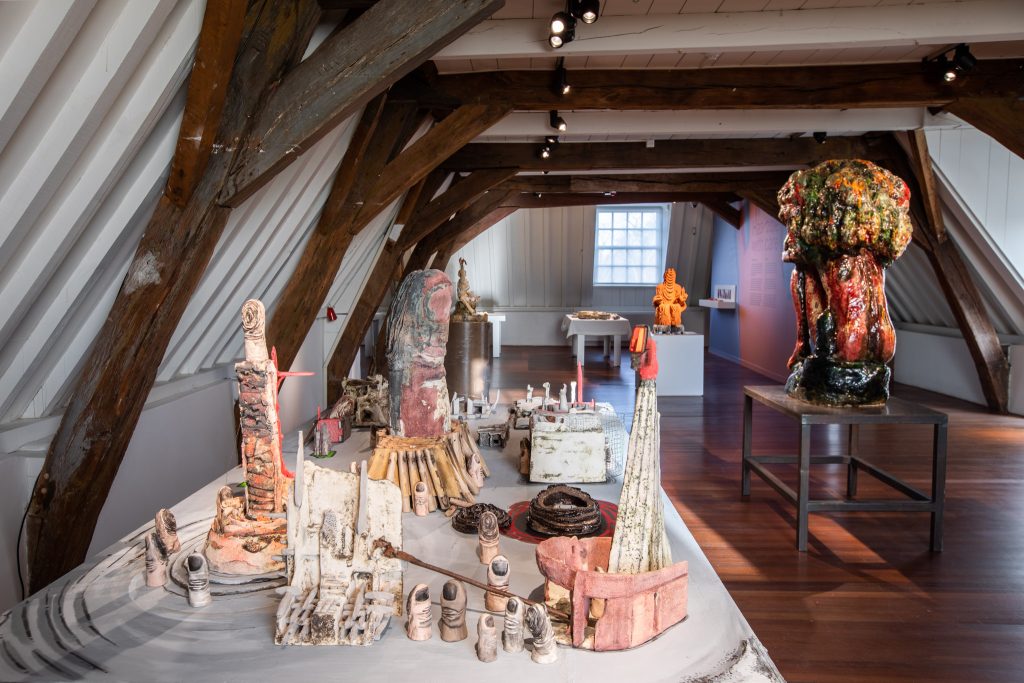
Handle with Care includes work by artists from countries not necessarily associated with contemporary ceramics, such as Nigeria, Surinam, Peru, or Dagestan (Russia). How did you make the selection?
Handle with Care includes both historical and contemporary works from across the globe. Ceramics are found in most cultures and epochs. As an art medium, it truly celebrates cultural diversity. One of the aims of the exhibition is to highlight the fact that ceramics is a practice that forms a part of our collective DNA. It is possibly the most global of all art forms.
The show’s opening featured a performance by Neha Kudchadkar, whose work, Handjob, is also part of the show. Can you tell us more about her performance?
Neha wrote the following about her performance. ‘How does one accept self-care and find moments of intimacy with oneself when the mind is numb and stifled with the happenings of the world? A bullet through a sister, the release of rapists, the hacking of the earth, the swallowing of the ocean, drowning of children. Could the greatest act of resistance be to be myself? To nurture, serve, decorate and love my being for being? Using the thumri as a starting point, I claim my ground and be.’ Using poetry, song, and dance, Neha’s performance explored self-care as expressed through the ritual of self-adornment.
What are the highlights of Handle with Care? How should visitors read and experience the show?
While each visitor will have their own personal reading or experience, I hope that the visitor is amazed and awe-struck by the design of the exhibition and the quality of the works! I also hope visitors feel respected and handled with care!
An important but relatively discreet development in this exhibition is formulating a new format for the labels that describe exhibits. We blended templates traditionally used to describe the two types of art found in this museum, namely ‘heritage’ objects, and fine art. The new labels acknowledge the numerous unknown makers of works from distant times and lands.
Like most museums in Europe, the majority of the objects in our collection were collected in the context of colonial and neo-colonial projects, a period when due diligence about provenance was not a priority. Having my roots in South Africa, I can attest to the widespread practice of collectors, who chose not to record the name of an artist as a way of controlling the market. It means others cannot collect or research similar works, and the maker cannot sell to other collectors. An acknowledgment of this history of unequal relationships is reflected in the use of the term ‘unidentified artist’ instead of ‘anonymous’ or ‘unknown’ artist.
Handle with Care is on view at the Princessehof National Museum of Ceramics, Leeuwarden, until October 20, 2023.
Ceramics Now • December 2022


